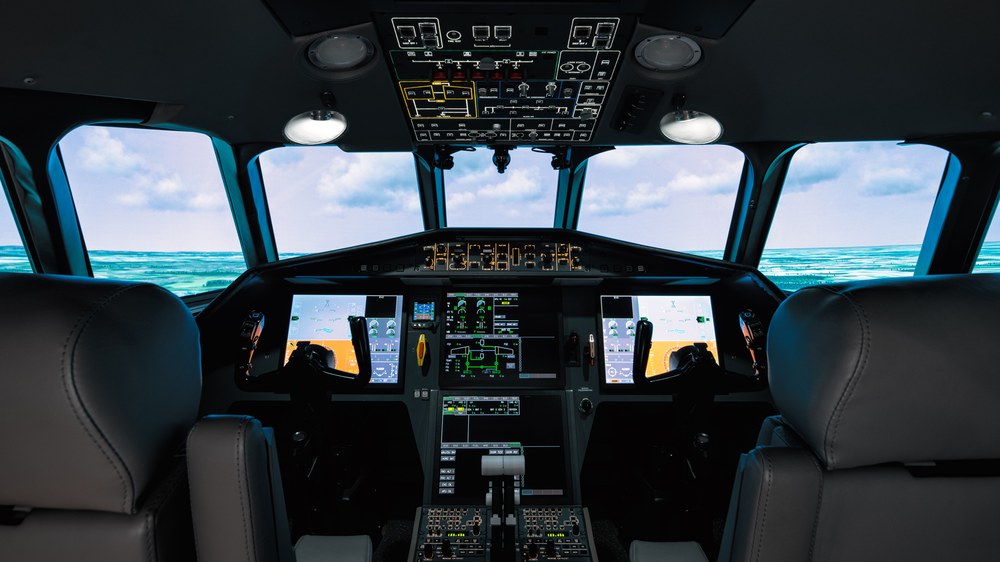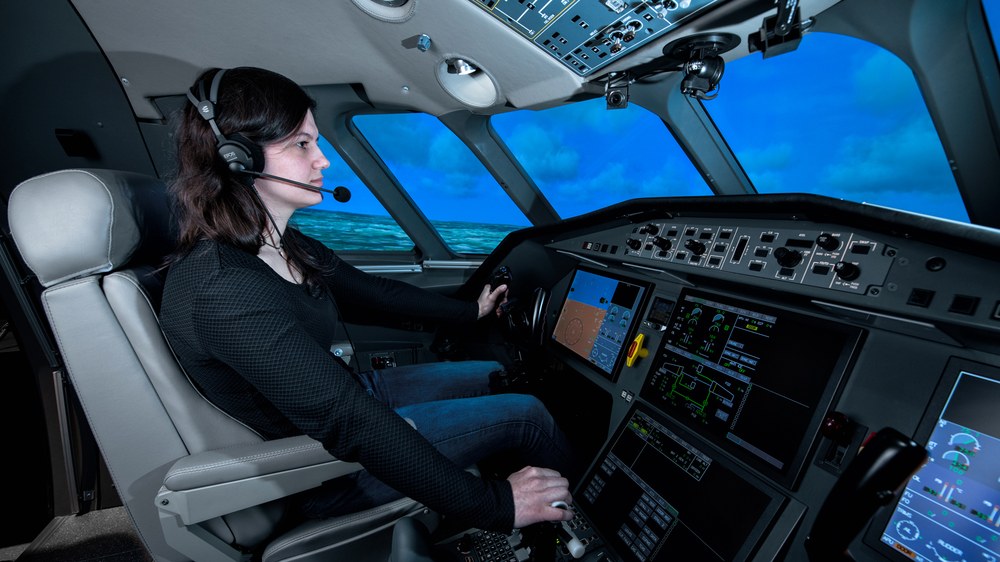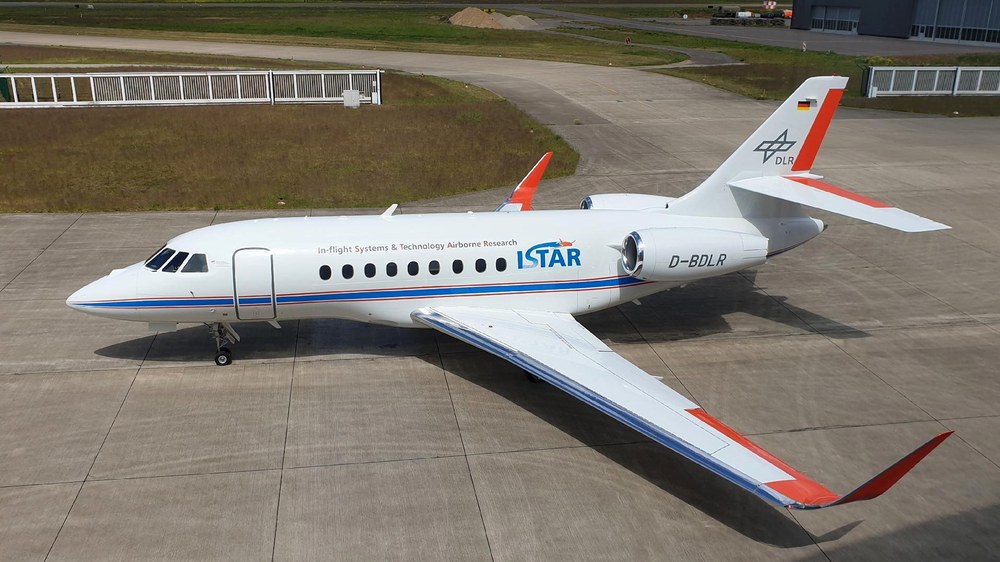DLR puts ISTAR flight deck into operation



- DLR is expanding its AVES simulator centre with a new flight deck.
- With the ISTAR simulator flight deck, DLR will be able to simulate business jets in the future.
- The ISTAR simulator flight deck supports pilots in testing new flight systems before the real first flight.
- Focus: Aeronautics
At the AVES (Air Verhicle Simulator) simulator centre of the German Aerospace Center (Deutsches Zentrum für Luft- und Raumfahrt; DLR), researchers can test their developments in a simulation before the actual maiden flight. To make this possible for the DLR research aircraft ISTAR in the future, DLR has expanded the simulator centre with a new flight deck. On 15 March 2024, the ISTAR simulator flight deck was inaugurated with guests from research, industry and academia at the DLR site in Braunschweig.
"Our new ISTAR simulator flight deck is the logical addition to DLR's ISTAR research aircraft, a Dassault Falcon 2000LX modified for research," says Holger Duda from the DLR Institute of Flight Systems. "It complements our AVES simulator centre with a flight deck from the business jet segment," continues Duda. The simulator centre already has cockpit modules from an Airbus A320 and a Eurocopter EC 135 – both of which are also part of DLR's research aircraft fleet. In addition, the researchers have a passenger cabin with a virtual view of the exterior at their disposal.
Three projection systems, six metres in diameter and 4000 kilograms
DLR has invested approximately 2.5 million euros in the new simulation facility. In addition to the simulator flight deck, it also consists of a visualisation system with three projection systems and the necessary computer and network infrastructure.
"The ISTAR flight deck was built from an original flight deck segment of a decommissioned Falcon 2000," explains Duda. "We were able to upgrade existing, identical components to be used in the simulator and supplement the missing instruments with exact replicas." The corresponding new visual system includes a three-channel projection system and a dome measuring six metres in diameter.
The ISTAR flight deck weighs 4000 kilograms. It is compatible with the existing AVES motion platform and can therefore be used both as a mobile and stationary 'fixed base simulato'" for research purposes.
New flight deck for multiple research topics
"The new cockpit allows us to optimally prepare DLR test pilots for the sometimes demanding flight conditions often encountered during research flights," says Duda. "They can familiarise themselves with the new requirements in the simulation before the actual first flight."
The ISTAR flight deck also opens up new possibilities with regard to business jets. For example, the scientists can use it to further their research into energy-optimised flight routes. The researchers can also use the simulation to investigate the use of artificial intelligence in the cockpit to minimise the workload of pilots in critical situations. "There are many areas of research in which we can and will use the cockpit in the future," says Duda.
